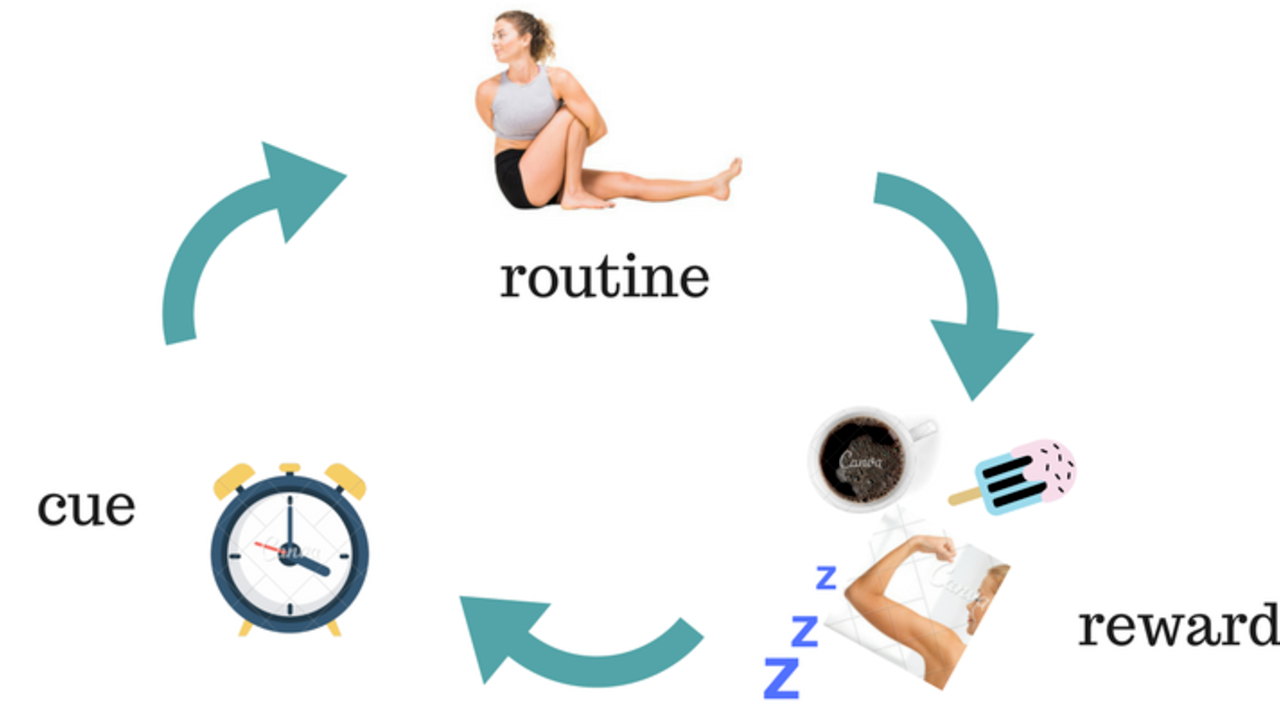How to Make Practice a Habit

I’ve had a lot of students come and go in the six years that I have been teaching a daily Mysore program. This can be for a variety of reasons: schedules change, people have babies, jobs relocate. But the truth is, a lot of people never really stick to the practice, or the practice doesn’t stick to them. What I have noticed over the years is that those who make practice a habit are the ones who practice for the long haul.
Our habits shape us and they play a central role in any successful long-term discipline. Once practice is a habit, it is no longer something that we have to think about. You wake up, you brush your teeth, you practice yoga. Boom—it’s done.
But getting to the point where practice is a habit is difficult. We’ve all felt it—showing up is the hardest part. Our minds play tricks on us. They have all sorts of sneaky reasons to try to prevent us from practicing, because the mind knows that with practice, its thought patterns will gradually change.
If you want to make practice easy you have to create triggers to make it a routine. You have to force bad tendencies into the background and reinforce good ones. Once you create a new pattern, practice will become as automatic as any other habit.
So, I started to wonder: how can I help students develop positive routines that help them make practice a habit? How can I help students show up? Here are a few suggestions I’ve come up with:
1. Clearly define the benefits associated with your practice. Any reason to get you on your mat is a noble one. Strong shoulders? Calm mind? Better sleep? Less back pain? Enlightenment?
2. Choose a cue, such as going to the shala as soon as you wake up, and a reward, such as a latte or muffin after each practice. Think about your reward and allow yourself to anticipate it!
3. Believe in yourself. For a habit to stay changed, people must believe change is possible. And most often that belief emerges with the help of a group. That’s why practicing in a community is so helpful. People are already doing it. People have already gone through it. People are silently supporting you—without anyone saying a word, there is a collective voice encouraging you: “YOU CAN DO EEEEET!” Belief is essential—and it grows out of a communal experience, even if that community is only two people.
4. Find the support of a group. Don’t practice in a shala? Find a practice buddy or support online. FaceTime a friend and get on your mats together. Find a mentor to chat with (I'm offering a mentorship program!). Use the group or person when you feel like you might stumble. Your odds of success go up dramatically when you commit to changing as part of a group.
5. Set small, achievable goals. I don’t mean like catching your heels in kapotasana or finishing a particular series. For a new habit to stick, it should feel easy; in the beginning, maybe all you do is get on your mat and stand in samasthitih.
6. Get specific. Write down your goals for the week and exactly what you are going to do. Note what time you will wake up, what time you will leave your house, how you will get to the shala, what time you will start to practice, what time you will finish practice.Some examples:
I am going to do 5 sun salutations.
I am going to practice for 20 minutes.
I am going to practice 5 days this week.
I am going to get to the shala by 6:45 a.m. and have an hour for my practice.
I am going to do at least 5 urdhva dhanurasanas.
7. Anticipate and troubleshoot setbacks. Here are some examples:
Setback: You have a tendency to sleep through your alarm. Solution: Try a different alarm, like this one. Bonus: It sounds like R2D2!
Setback: You wake up stiff. Solution: Take a hot shower and walk your dog before practice to get your body moving.
Setback: You have a stressful week at work. Solution: Remember that yoga makes you feel less stressed!
Setback: You are dragging in the morning. Solution: Take a cold shower and do some breathing exercises.
Setback: You aren’t motivated. Solution: Unroll your yoga mat on the floor near your bed with your yoga clothes right there—as soon as you get up in the morning you can hop into your yoga clothes and onto your mat.
8. Consider what might be holding back your new habit. If you can identify your setbacks, you can make a plan for dealing with them (see #7, above). Come up with solutions ahead of time so that so that you have a plan to work around obstacles that keep you from your mat. By doing this you are telling yourself how you are going to get over the hump.
9. When you slip, get back on track quickly. Remember, you need to be consistent—not perfect! It takes time to build new habits. Be patient. Even if you only stick to your new habit half the time, you are doing 50% better already.
Author: Jen René is Yoga and Meditation Teacher



